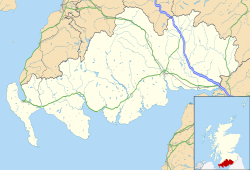| Bankend | |
|---|---|
 | |
Location within Dumfries and Galloway | |
| Council area | |
| Lieutenancy area | |
| Country | Scotland |
| Sovereign state | United Kingdom |
| Police | Scotland |
| Fire | Scottish |
| Ambulance | Scottish |
| UK Parliament | |
| Scottish Parliament | |
Bankend is a village in Dumfries and Galloway, Scotland. [1] It is located near Lochar Water, the civil parish Caerlaverock and the villages of Blackshaw, Glencaple and Shearington. [2] In 1961 it had a population of 79. [3]
